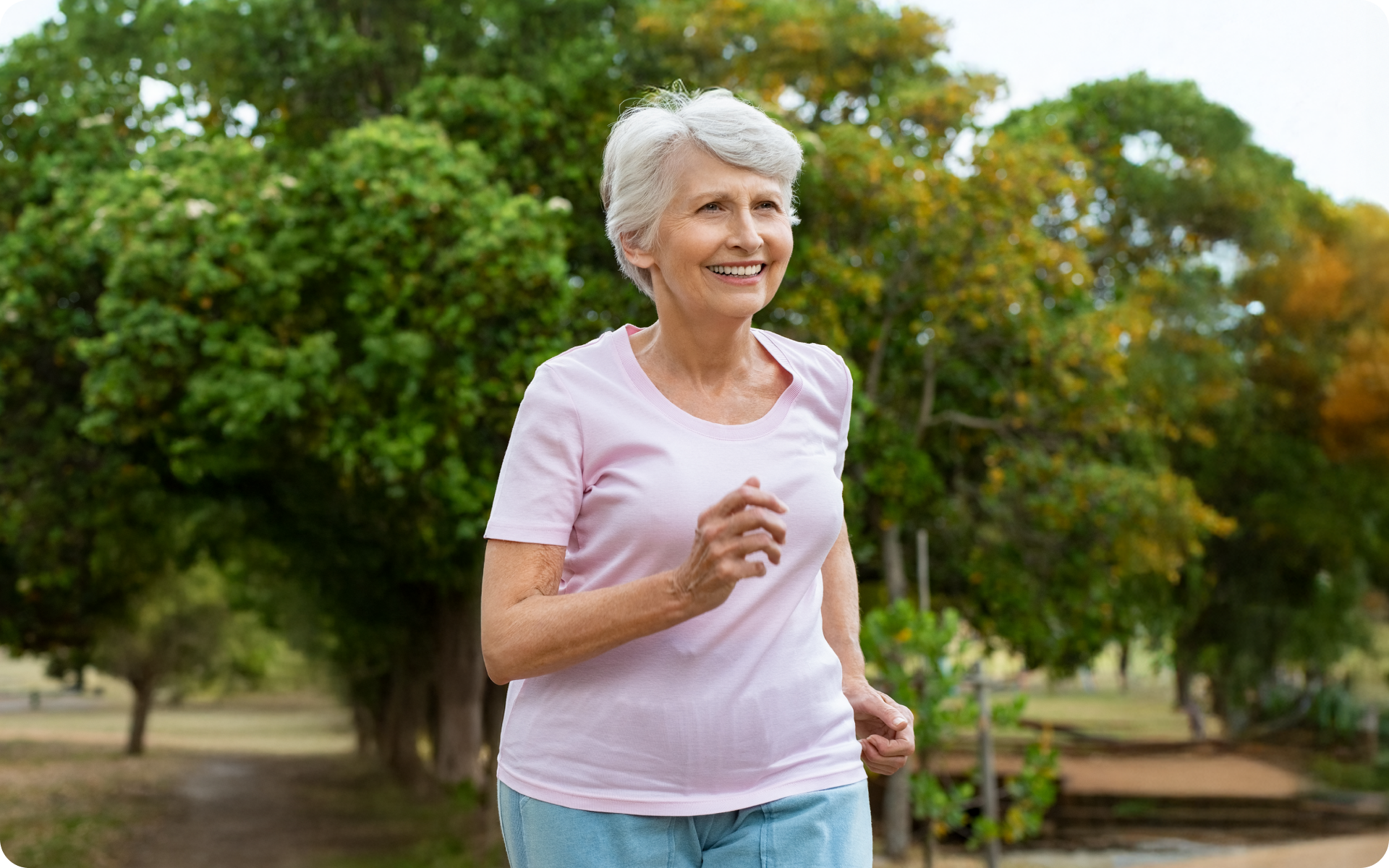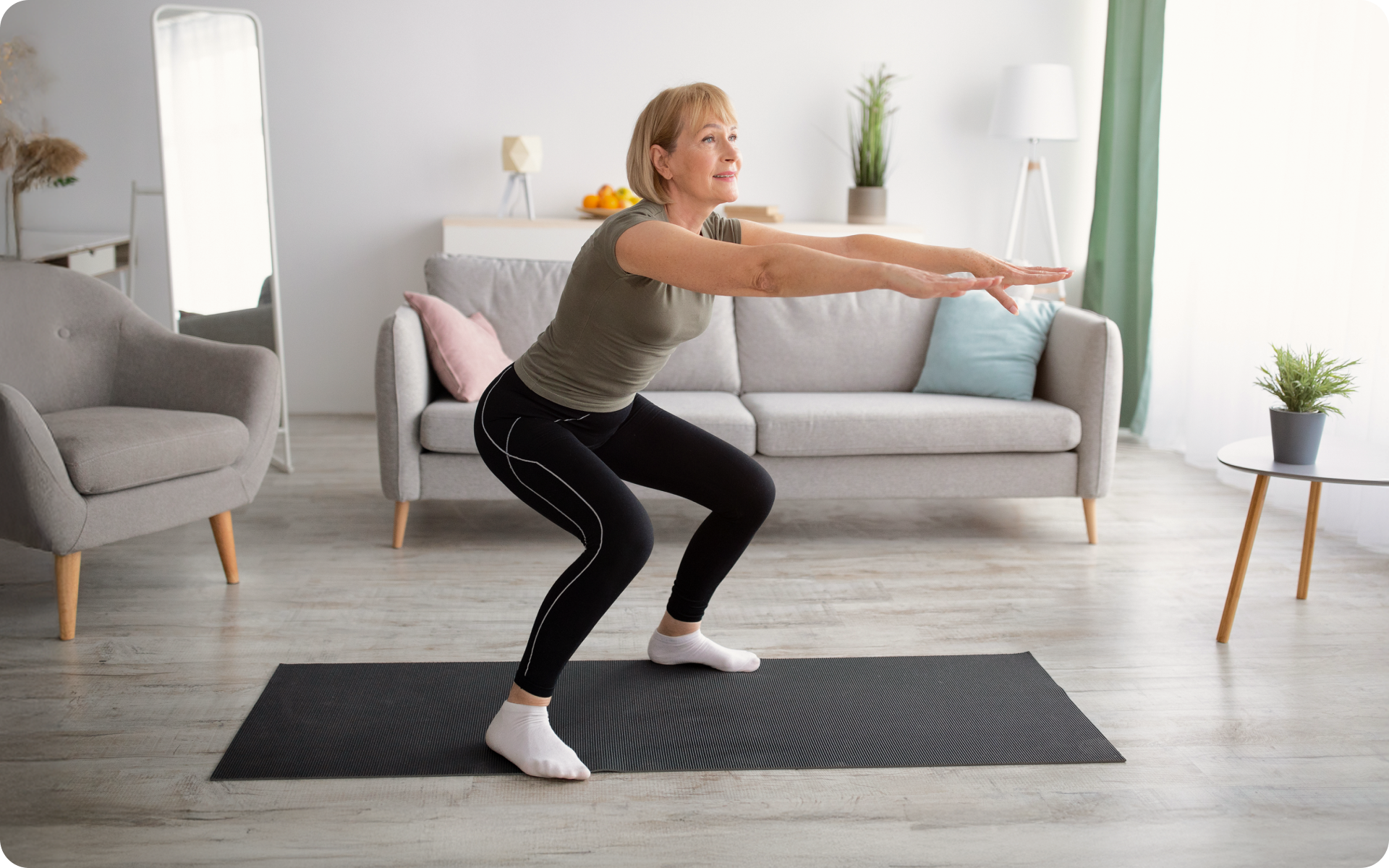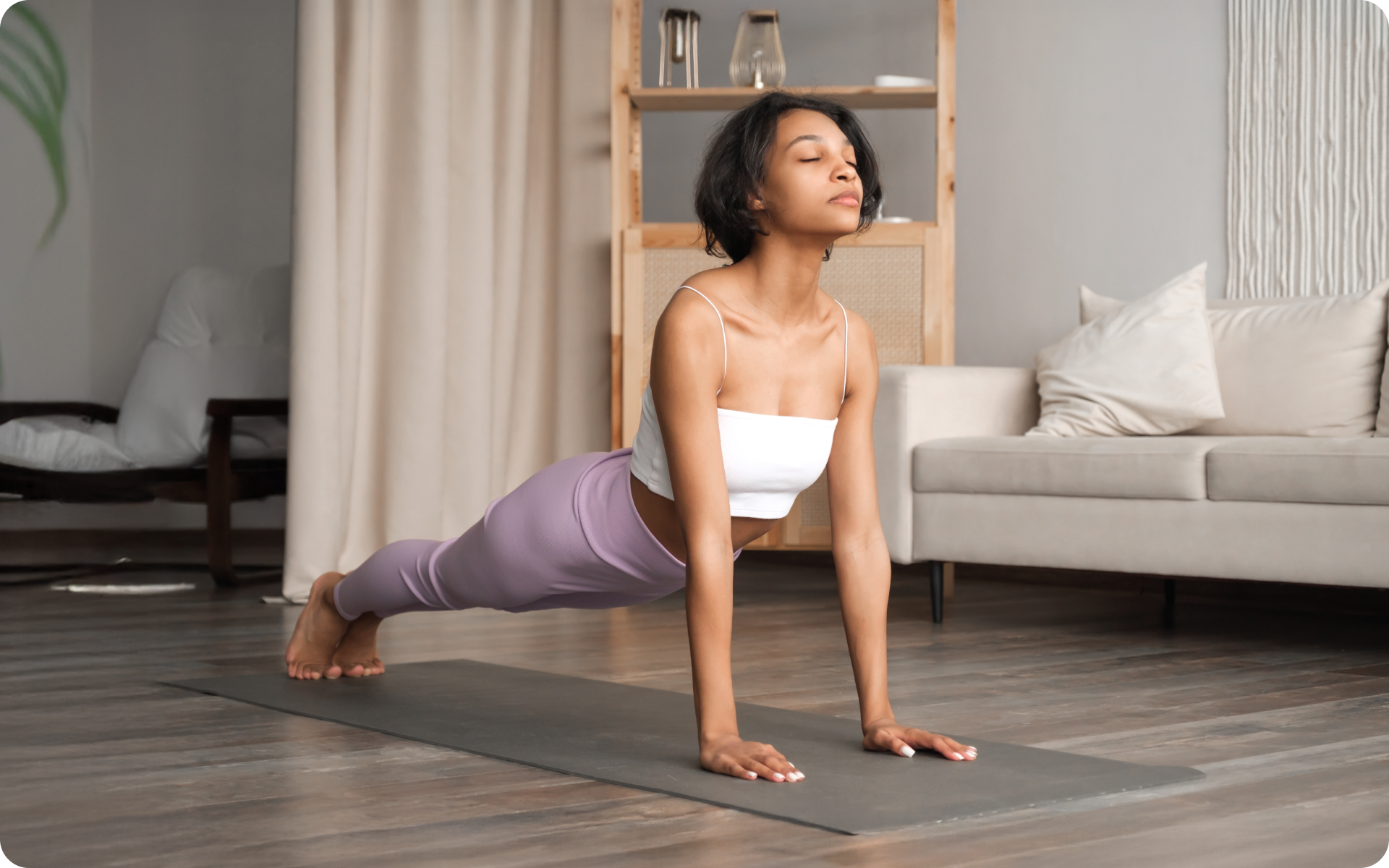Are you someone who wants to get in shape but dreads working out? If this describes you, then biking could become your thing. Going on a bike ride is an exhilarating experience, particularly when you know you’re burning calories while making your regular commute.
Also, biking is eco-friendly, so you’re losing weight and reducing your carbon footprint, which is equally rewarding. Whether you’re new to biking or are a seasoned cyclist, when biking 10 miles, calories burned are far more effective than with many other exercises (7).
Before we learn about the number of calories spent cycling 10 miles, let’s explore the various factors that influence the calorie-burning potential of cycling.
Is Biking 10 Miles a Day Good?
Whether biking 10 miles a day is good for you is dependent on many factors, including your current fitness level, goals, and overall health conditions. Here are some potential benefits of cycling ten miles daily:
- Cardiovascular Health: Cycling is an excellent way to raise your heart rate. Aerobic exercise such as cycling can help to strengthen your heart (9). This supports your health and reduces the risk of disease.
- Less Exposure to Air Pollution: Cyclists can navigate traffic and take routes with less air pollution. Those who want fresh air can take less saturated routes and enjoy fresh air.
- Weight Loss: Biking can be an effective way to burn additional calories (14). Muscle building and biking can burn calories, which helps people hit their fitness targets.
- Lower Risk of Chronic Diseases: Regular exercise such as biking can lower the risk of developing chronic diseases such as type 2 diabetes, stroke, and some types of cancer.
Follow the safety protocols before you design a 10-mile cycling workout plan for yourself. The health perks that come your way may make you addicted to the routine!
Lean and toned up body isn’t just a far-fetched fantasy. Check out the BetterMe app and watch it propel your weight loss journey into high gear!
Factors That Influence Biking 10 Miles Calories Burned
It doesn’t matter if you’re riding a stationary bike or cycling outdoors, various factors influence the calories you burn while performing this activity.
Terrain
The most obvious factor is the route you take when biking. If you’re cycling on mountainous terrain with bumps, you tend to burn more calories than on a smooth road. To lose weight, the key is to burn more calories than you consume.
Body Weight
The second most important factor is an individual’s body weight. A 100-pound person may burn calories differently than a 200-pound person.
To understand the number of calories biking can burn, let’s analyze the data shared by the CDC. In the US, an average male weighs 199.8 pounds, and an average female 170.8 pounds (1). On average, a 200-pound person loses 340 calories when cycling for 10 miles (16).
Fitness Level
Your fitness level also influences the number of calories you burn. If you’re new to working out, you may burn more calories than those who’ve been working out for some time at the same intensity. This happens when our bodies become accustomed to working out (1).
Speed
The speed at which you bike heavily influences your calorie-burning potential. The higher the rate, the more calories burned.
Let’s take a look at the two common speeds and see whether you burn more calories at a high or moderate pace. Pace is indicated by the distance covered in an hour.
Average Pace: Your heart rate and breathing indicate a moderate pace. If you can continue a conversation while biking for some time, you’re going at a moderate pace. Harvard University states that a moderate pace is generally around 12-14 miles per hour (13).
If you bike at a moderate pace, you may lose (13):
- 210-240 calories if you weigh 125 pounds
- 260-298 calories if you weigh 155 pounds
- 311-355 calories if you weigh 185 pounds
Fast Pace: You’re riding fast if you can’t continue a conversation and you run out of breath while biking. A fast pace is a high-intensity effort and can result in losing significantly more calories as your body needs to work a lot harder, which expends more energy.
If you bike faster, you may lose (13):
- 300–495 calories if you weigh 125 pounds
- 372–614 calories if you weigh 155 pounds
- 444–733 calories if you weigh 185 pounds
Type of Biking
You’ll burn calories whether you cycle indoors or outdoors. The amount of calories burned may vary as stationary biking burns fewer calories than outdoor biking. Generally, when riding a stationary bike 10 miles, the calories burned is slower than with outdoor biking.
An individual who weighs 155 pounds riding a stationary bike at a moderate pace for 30 minutes can burn approximately 250 calories, while biking at high speed can burn approximately 270 calories, according to Harvard University (13). Regarding outdoor biking, an individual who weighs 155 pounds riding an outdoor bike at a moderate pace for 30 minutes can burn approximately 288 calories, while biking at a fast pace (>20mph) could burn approximately 594 calories.
Can You Lose Weight Biking 10 Miles a Day?
For those who cycle 10 miles, calories expended may massively impact their weight. Biking longer distances can burn fat and help shed excess body weight over time. Now that you’ve learned about the various factors, let’s take a look at how biking for 10 miles impacts calories.
Biking is a form of low-impact cardio that’s suitable for individuals with joint issues. Cycling can also increase blood circulation and effectively work out your heart, lungs, and muscles, supporting good heart health (9). Cardio is good for cardiovascular health, and cycling helps people achieve that. A bike ride of 10 miles is a good standard if you want to lose weight.
On average, you can achieve the 10-mile benchmark in 45 minutes (5). The key is to start slowly and gradually increase the pace. As you get used to cycling, you’ll easily pass the 10-mile mark in less than 30 minutes.
Read more: Kimchi: Calories, Nutrition, and Health Benefits
How Many Calories Does 10 Miles of Cycling Burn?
The calories burned when cycling 10 miles depends on your weight and fitness level (13). At 12-14mph:
- An individual weighing 150 pounds could lose 476 calories
- An individual weighing 175 pounds could lose 556 calories
- An individual weighing 200 pounds could lose 635 calories
- An individual weighing 225 pounds could lose 714 calories
- An individual weighing 250 pounds could lose 794 calories
Other Factors Influencing Calories Burned
While longer distances burn more calories, the time you spend cycling also plays a crucial role (10) (7).
| Time spentcycling / Weight (calories burned) | 150lb | 175lb | 200lb | 225lb | 250lb |
|---|---|---|---|---|---|
| 10 mins | 95 | 111 | 127 | 143 | 159 |
| 15 mins | 143 | 167 | 191 | 214 | 238 |
| 30 mins | 286 | 333 | 381 | 429 | 476 |
| 45 mins | 429 | 500 | 572 | 643 | 714 |
| 1 hour | 572 | 667 | 762 | 857 | 953 |
| 1.5 hours | 857 | 1,000 | 1,143 | 1,286 | 1,429 |
| 2 hours | 1,143 | 1,334 | 1,524 | 1,715 | 1,905 |
Let’s take a look at the calories burned cycling at different speeds (7):
| Speed / Weight (calories burned) | 150lb | 175lb | 200lb | 225lb | 250lb |
|---|---|---|---|---|---|
| 5.5 mph | 250 | 292 | 333 | 375 | 417 |
| 10 mph | 486 | 567 | 648 | 729 | 810 |
| 12 mph | 572 | 667 | 762 | 857 | 953 |
| 14 mph | 714 | 833 | 953 | 1,072 | 1,191 |
| 15 mph | 857 | 1,000 | 1,143 | 1,286 | 1,429 |
Here are the calories burned when cycling different distances at a pace of 12 mph (7):
| Distance covered / Weight (calories burned) | 150lb | 175lb | 200lb | 225lb | 250lb |
|---|---|---|---|---|---|
| 1 mile | 48 | 56 | 64 | 71 | 79 |
| 3 miles | 143 | 167 | 191 | 214 | 238 |
| 5 miles | 238 | 278 | 318 | 357 | 397 |
| 10 miles | 476 | 556 | 635 | 714 | 794 |
| 15 miles | 714 | 833 | 953 | 1,072 | 1,191 |
| 20 miles | 953 | 1,111 | 1,270 | 1,429 | 1,588 |
| 30 miles | 1,429 | 1,667 | 1,905 | 2,143 | 2,381 |
How Much Cycling Is Needed to Burn 1,000 Calories?
Burning up to 1,000 calories is dependent on your body weight, fitness level, and experience. On average, if you weigh approximately 150 pounds, you’ll need to bike for 2 hours at 15 mph and cover a distance of 30 miles.
If you weigh approximately 250 pounds, you must bike for 1-1.5 hours at 12-14 mph and cover 15 miles.
Does Cycling Burn Belly Fat?
Belly fat is the number one concern of many people. While it can be unsightly, belly fat also poses risks for several heart diseases, type II diabetes, and more (17).
Cycling is an effective way to combat belly fat. While it doesn’t specifically target the abdomen, it improves metabolism and fat-burning tendencies that target your weight overall (8). As you’ve learned that high-intensity biking burns more calories, you must cycle at a moderate-fast speed to target your belly area. Here’s what you can do to lose belly fat:
- Warm up for 10 minutes
- Hop on your stationary bike and cycle at a fast pace (breathe hard, but don’t gasp) for 1 minute
- Slow down and cycle at a slow pace for 1 minute
- Increase your speed again and do it 3-4 times
- Cool down for 3-4 minutes
There are certain preventive tips you should consider to avoid burnout.
- Avoid overdoing: While you may be tempted to cycle fast initially, don’t overwork your body. Going hard for a long time stresses your body and could lead to overtraining, hindering results and performance. Cycle at a fast pace and then shift to a slow pace to balance.
- Include interval training in your sessions where you alternate between periods of low-intensity activity and short bursts of higher-intensity effort. This approach can help improve your fitness and positively influence your body weight and fat levels (14).
The following tips may help you lose belly fat with indoor cycling (14):
Fasted Cycling
You can also do fasted cycling, i.e. cycling on an empty stomach. For example, you could ride a stationary bike for 10 miles in the morning.
Hop Off the Bike
You don’t need to remain seated constantly. Take a few breaks in between. Incorporating bodyweight exercises such as squats or lunges can support and develop lower-body strength and add variety to your sessions.
Eat a Healthy Diet
Maintaining a well-balanced, nutritious diet is essential if you want to lose weight. Cycling alone won’t sustain your fitness goals if you’re not mindful of what you consume. Here are some examples of key foods to include regularly:
- Whole grains such as brown rice, oats, quinoa, wheat, and barley
- Lean proteins such as fish, chicken, turkey, lean cuts of meat, eggs, legumes, tofu, and low-fat dairy
- Vegetables such as dark green vegetables, red and orange vegetables, starchy vegetables, and legumes (beans and peas)
- Fruits such as apples, oranges, bananas, berries, and melons
- Dairy such as milk, yogurt, and cheese or calcium-fortified non-dairy milk alternatives such as soy, almond, or oat milk
- Healthy fats such as avocados, nuts, seeds, olive oil, and fatty fish
- You should consider reducing your consumption of sugary foods, processed food, alcohol, sodas, and artificial fruit juices
Join a Spin Class
Working out in groups could help enhance your weight loss goals. Joining a spin class can help you connect with like-minded individuals, motivate you to keep going, and encourage you to exert yourself more. You may lose more calories in a spin class than cycling at home alone.
Looking for a way to break the vicious cycle of weight loss and tone up all the jiggly parts? Watch the extra pounds fly off and your muscles firm up with the BetterMe app!
What Are the Health Benefits of Cycling 10 Miles?
Cycling for 10 miles can provide many health benefits for your physical and mental health.
Improves Mental Well-being
Biking is a fun activity. As it’s a low-impact activity, many individuals may prefer it. It also allows you to spend time outdoors, which can support and promote positive mental health. Exercise such as cycling can elicit the production of serotonin, a feel-good brain chemical that is released in response to excitement or happiness. This can help lower levels of stress and support mental well-being.
Boosts Metabolism
Cardio such as running or cycling can help boost metabolism, which can help increase the number of calories burned and support fat loss. For optimal weight loss, a combination of strength training and cardio has been proven to be most effective. You should consider regularly including both training methods as part of your overall workout routine.
Regulates Cholesterol
Cycling is beneficial for your cholesterol levels. Healthy cholesterol levels are important for heart health and can lower the risk of strokes and heart attacks.
A study found that indoor cycling positively impacts cholesterol (14). It can increase HDL cholesterol levels, which is the good type of cholesterol, while decreasing LDL cholesterol (the bad kind) and triglycerides.
Cycling can help improve your overall cholesterol profile, which is good news for cardiovascular well-being (18).
Improves Balance
Cycling can help you stay upright and focus on balancing your body while cycling. This enables you to coordinate your movements and can help improve your balance in other activities. As we age, our balance and coordination can decrease. Regular cycling can play an important role in keeping fit and healthy and support important factors such as balance and coordination.
Is Cycling 10 Miles a Day a Lot?
Whether biking 10 miles a day is a lot is dependent on several factors. Here’s a breakdown for figuring out how much distance you can cover in one day:
- For beginner or intermediate cyclists: If you’re new to cycling or haven’t ridden regularly before, 10 miles can be a difficult but attainable goal. Build your endurance by covering smaller distances and gradually increasing distance and intensity.
- For experienced cyclists: 10 miles is a typical ride for seasoned cyclists. It can be achieved in 30-45 minutes at a moderate pace.
This shows that cycling 10 miles daily isn’t too much for pros. Of course, it could be a challenge for newbies, but starting with smaller distances can help build endurance over time.
How Many Miles of Cycling a Day Is Good?
Some people may cycle for 20 miles a day. This can be achieved by experts who enjoy their time on the bike and want to achieve their fitness targets. Here’s a general guideline to understand how many miles it is good to cycle each day:
Beginners
If you’re new to exercise, start with short rides of 3-5 miles per day. Gradually increase the distance when you feel fitter.
Intermediate
Once you can comfortably cover a distance of 5 miles, you can aim for 10-15 miles daily.
Advanced
Experienced cyclists can go up to 20-30 miles on their bikes daily.
Don’t push yourself too hard if you can’t cover the desired distances on a particular day. Take a break if you don’t want to exert yourself more or if you feel ill. Even seasoned cyclists need rest to allow their bodies to recover and adapt to reach their targets. So, chill and nourish your body by eating an adequate diet to support optimal performance and recovery.
You’ll gradually feel less tired and more encouraged to hit the 10-mile target (and even more).
What Happens If I Cycle 10 Miles a Day?
Cycling 10 miles daily can improve your fitness and positively influence many aspects, including your mood. These perks make a person who cycles regularly less likely to fall sick. Of course, there will be some days when you don’t have the strength to go out and cycle. This may be due to the weather or simply lethargy.
Such days call for an alternate action plan. You can opt for an indoor cycling workout plan or choose another exercise. This could be burpees or lunges, or a quick cardio routine. The aim is to keep your body moving and prepare it for covering longer distances on the bike.
Some drawbacks that could result from cycling 10 miles a day include
- Injury
- Time consumption
- Muscle soreness
Remember, these are some potential drawbacks that could happen with any workout, but they shouldn’t keep you from getting on your bike. Instead, try to create a flexible cycling routine. When you start to enjoy regular cycling, you’ll fall in love with your routine and may be keen to get back on your bike even in poor weather conditions.
Read more: Intermittent Fasting Macros – Managing Calories the Smart Way!
FAQs
Does cycling build muscle?
Biking can help build muscle. It can enhance the capacity of your lower body and strengthen your leg muscles without putting excessive strain on your joints.
Resistance in cycling works various muscles, particularly the glutes, hamstrings, quads, and calves, which can help develop your lower-body strength and endurance.
How many miles should I bike a day to lose weight?
Your weight loss will depend on your starting weight, calorie intake, and output, diet, stress, and sleep levels. Generally, if you’re completely new to exercise, it is recommended to start at a comfortable level and build up over time.
Weight loss can certainly be supported by regular cycling. It’s important to ensure you maintain a nutrient-dense diet and meet other important factors such as hydration and sleep.
Does cycling 4 miles a day help you lose weight?
Yes, 4 miles is enough distance to lose weight. It should be noted that many factors may impact your calorie reduction. Therefore, you should consider them all and consult your physician for assistance.
The Bottom Line
When you cycle 10 miles, the calories you burn could be higher than with other exercise regimes. It’s essential to take things one step at a time and gradually build your distance, duration, and intensity. We’ve evaluated how different factors come into play when you’re trying to lose weight through biking. You should consider all these factors and then curate a biking plan.
Consult your physician if you have poor eyesight or balance and coordination issues before you consider cycling. In such scenarios, you could always opt for an indoor stationary bike.
DISCLAIMER:
This article is intended for general informational purposes only and does not serve to address individual circumstances. It is not a substitute for professional advice or help and should not be relied on for making any kind of decision-making. Any action taken as a direct or indirect result of the information in this article is entirely at your own risk and is your sole responsibility.
BetterMe, its content staff, and its medical advisors accept no responsibility for inaccuracies, errors, misstatements, inconsistencies, or omissions and specifically disclaim any liability, loss or risk, personal, professional or otherwise, which may be incurred as a consequence, directly or indirectly, of the use and/or application of any content.
You should always seek the advice of your physician or other qualified health provider with any questions you may have regarding a medical condition or your specific situation. Never disregard professional medical advice or delay seeking it because of BetterMe content. If you suspect or think you may have a medical emergency, call your doctor.
SOURCES:
- 6 Factors That Can Affect How Many Calories You Burn (2022, everydayhealth.com)
- 15 Tips On How To Lose Belly Fat With Indoor Cycling (2023, bicycle2work.com)
- About Adult BMI (n.d., cdc.gov)
- Average weight of men and women in the U.S. and how it has changed over time (2021, healthyforlifemeals.com)
- Body mass index, waist circumference, and risk of coronary heart disease: a prospective study among men and women (2010, ncbi.nlm.nih.gov)
- Calories burned in 30 minutes for people of three different weights 2021, health.harvard.edu)
- Calories Burned Biking (n.d., caloriesburnedhq.com)
- Can You Lose Belly Fat by Cycling? (n.d., medicinenet.com)
- Cycling – health benefits (n.d., betterhealth.vic.gov)
- Cycling vs. Walking: Which Is the Better Workout for You? (2021, healthline.com)
- How Many Calories Biking 10 Miles? (2022, cyclechronicles.com)
- How Many Calories Is 10 Miles Biking? (n.d., thedonutwhole.com)
- How many calories does biking burn? (2020, medicalnewstoday.com)
- Health Benefits of Indoor Cycling: A Systematic Review (2019, ncbi.nlm.nih.gov)
- Six weeks of a polarized training-intensity distribution leads to greater physiological and performance (2013, journals.physiology.org)
- The Calories Burned Cycling 10 Miles (2013, sportsrec.com)
- Why belly fat is dangerous and how to control it (2020, utswmed.org)
- Why Cycling Is Good For Your Heart: 10 Top Health Benefits of Cycling (2022, linkedin.com)
















